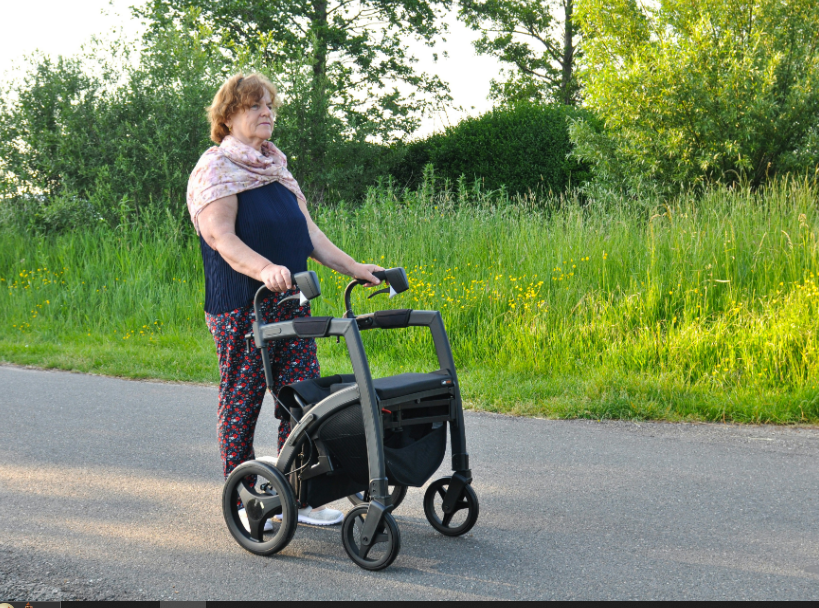Caring for a loved one with Parkinson’s disease at home is a complex and fulfilling experience. Approximately one million Americans are affected by Parkinson’s disease, a progressive neurological disorder. Projections indicate that this figure will increase to 1.2 million by the year 2030.
The disease affects movement, balance, and often speech, leading to various physical and emotional needs that change over time. To support a loved one through these changes, it’s essential to be patient, compassionate, and proactive in adapting to their home environment.
In this article, we will examine effective methods for supporting a family member with Parkinson’s through practical solutions and a nurturing environment.
Understanding Parkinson’s Disease and Its Symptoms
Parkinson’s disease is a condition that gradually worsens and affects the brain and nerves. This occurs when the brain cells responsible for producing dopamine begin to deteriorate. Dopamine, a crucial brain chemical, plays a vital role in regulating movement, mood, and thought processes.
According to the American Parkinson Disease Association, a recent study revealed the incidence of Parkinson’s disease (PD) is 50% higher than earlier estimates. Previously, it was thought that around 60,000 new cases of PD were diagnosed annually. However, the new findings suggest that approximately 90,000 new cases are diagnosed each year in the US.
Parkinson’s disease affects both movement and non-movement aspects of a person’s life. Common motor symptoms of Parkinson’s disease encompass rigidity, characterized by stiffness and muscle tension, and bradykinesia. Also, patients may experience tremors that typically start in the hands and postural instability, resulting in challenges with balance and coordination.
Non-motor symptoms can include cognitive impairment, fatigue, depression, anxiety, and sleep disturbances.
Given the complexities of Parkinson’s disease, consulting with an expert with an advanced degree can be a good idea. For example, someone with a doctorate in nursing can offer valuable insights.
These experts are trained at the highest level of nursing science and equipped to conduct and interpret research that advances nursing care. With the option of an online PhD in nursing, a growing number of professionals are pursuing these degrees.
Their insights can help caregivers understand the latest strategies and resources available for managing Parkinson’s. This guidance supports a well-rounded approach to addressing the complex challenges posed by the disease.
Wilkes University states that its online PhD in Nursing emphasizes research and prepares graduates for careers in scientific inquiry within nursing science. This program empowers students for leadership positions and equips them with the skills necessary to conduct research that advances the nursing profession. Ultimately, it aims to improve nursing outcomes through innovative knowledge development.
Does Parkinson’s disease progress in stages? If so, what are the key changes that happen at each stage?
Yes, Parkinson’s progresses through five stages. Early stages (1-2) involve mild symptoms, like tremors and slight balance issues. Mid-stages (3) bring greater mobility challenges and risk of falls. In later stages (4-5), severe symptoms limit independence, with many needing assistance for daily activities as motor and cognitive functions deteriorate significantly.
Creating a Safe and Comfortable Home Environment
Modifying the home environment is essential to ensure the safety and well-being of individuals living with Parkinson’s disease.
Research from the National Institute of Health shows that individuals with Parkinson’s disease have an annual fall risk of 45% to 68%. Factors like freezing of gait, orthostatic hypotension, postural instability, and disease severity predict fall risk. Recurrent falls pose a significant challenge for patients and may indicate the progression of the disease.
Because Parkinson’s impacts balance, coordination, and mobility, modifying the home can lower fall risks and simplify daily activities. Installing grab bars in the bathroom, adding non-slip mats, and rearranging furniture to allow for clear, wide pathways are essential steps.
Good lighting is also critical, as well-lit areas help prevent accidents. To facilitate movement, opt for accessible storage options and robust, ergonomic furniture that aids in standing and sitting.
How can I make bathrooms and kitchens safer for someone with mobility issues?
To ensure safety in the kitchen and bathroom, keep frequently used items within easy reach to minimize bending or stretching. Opt for sturdy, accessible storage, and consider lever-style faucets and handles, which are easier for limited mobility.
Developing a Daily Routine for Consistency and Comfort
A consistent daily schedule can offer stability and ease for individuals with Parkinson’s disease, aiding in symptom management and alleviating stress. Regular schedules for activities, meals, and medication ensure that essential tasks are consistent, creating a sense of stability. Morning and evening routines are particularly helpful, as they align with natural energy cycles and help manage fatigue.
For caregivers, a set routine minimizes the guesswork and promotes smoother caregiving, allowing time for essential tasks and personal breaks. This balance supports the individual’s health and the caregiver’s well-being.
What strategies can help if my loved one has difficulty sticking to a routine?
If sticking to a routine is challenging, use visual reminders like calendars and set alarms for key activities. Make big tasks less daunting by breaking them down. Gentle encouragement and consistency help, as does adjusting the schedule to better match your loved one’s energy levels and symptom fluctuations.
Considering the Services of a Home Care Nurse
As Parkinson’s progresses, caregiving demands can increase significantly, making the support of a home care nurse beneficial. Home care nurses are skilled professionals who can help with daily activities like personal care, administering medications, and assisting with movement. They also help monitor symptoms closely, which can improve overall health outcomes.
Hiring a home care nurse can ease the burden on family caregivers, enabling them to prioritize emotional support with loved ones.
Many home care nurses today have advanced training. Their knowledge and skills can be incredibly helpful, particularly when managing changing symptoms or working with medical professionals. Professional, skilled assistance at home improves safety while promoting a sense of stability and continuity in care for individuals with Parkinson’s.
Encouraging Physical Activity and Mental Engagement
Physical activity and mental engagement are crucial for individuals with Parkinson’s disease to preserve mobility, cognitive function, and emotional health. Simple exercises, including gentle stretching, balance activities, and short walks, enhance flexibility, muscle strength, and coordination, ultimately lowering fall risk. Also, practices like tai chi and yoga, which emphasize balance and controlled movement, can provide significant benefits.
A study published by Nature highlights the increasing evidence supporting exercise programs in managing the motor symptoms of Parkinson’s disease. The benefits reported from these programs vary based on the type, intensity, and duration of the exercise involved. Clinical trials show that engaging in moderate-to-high-intensity exercise multiple times a week for six months can significantly decrease PD motor severity.
Equally important is mental stimulation, which can include activities like reading, puzzles, and games that engage memory and cognitive skills. Social interaction, such as joining community groups or hobby classes, can boost mood and help combat feelings of isolation.
Focusing on Emotional Support and Communication
Emotional support and open communication are essential when caring for a loved one with Parkinson’s. The disease often brings physical and mental challenges that can lead to frustration, anxiety, and feelings of isolation. Listening attentively and encouraging open conversations can help your loved one express their fears or concerns, fostering a supportive environment.
To facilitate communication, especially when speech might be affected by Parkinson’s, use simple words, maintain eye contact, and be patient for responses. Regularly expressing empathy, offering reassurance, and validating their emotions strengthens trust and emotional connection.
Empowering Care Through Understanding and Support
Caring for a family member with Parkinson’s disease is a journey that demands patience, empathy, and adaptability. With the right strategies and resources, caregivers can effectively navigate this journey. This fosters a nurturing environment that improves health and well-being for both the individual and the family. Through love and support, families can confront the challenges posed by Parkinson’s disease.



